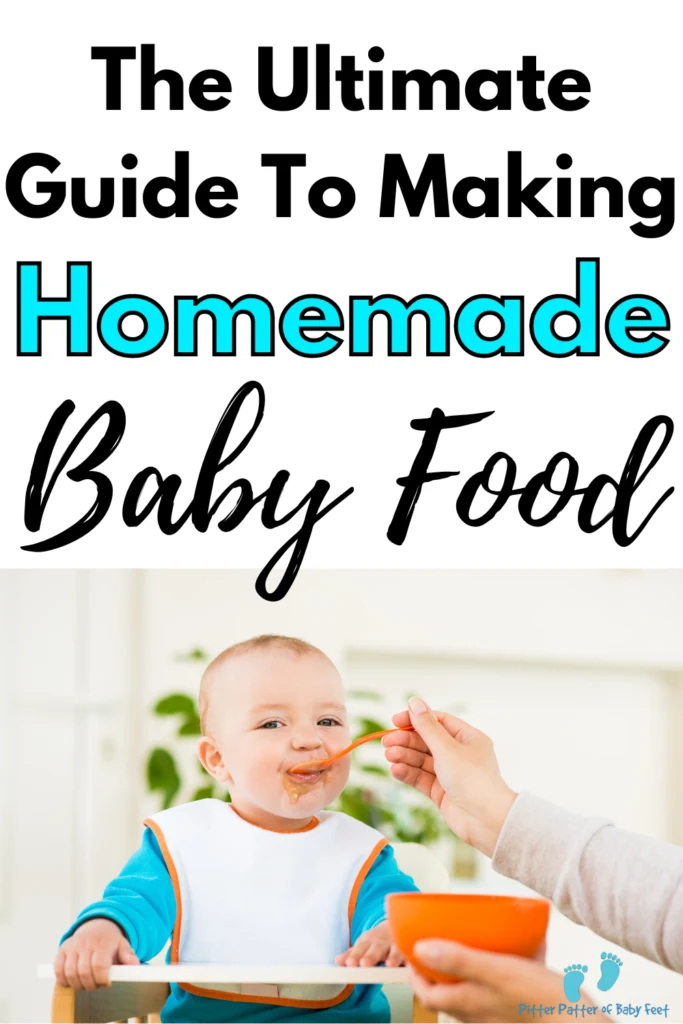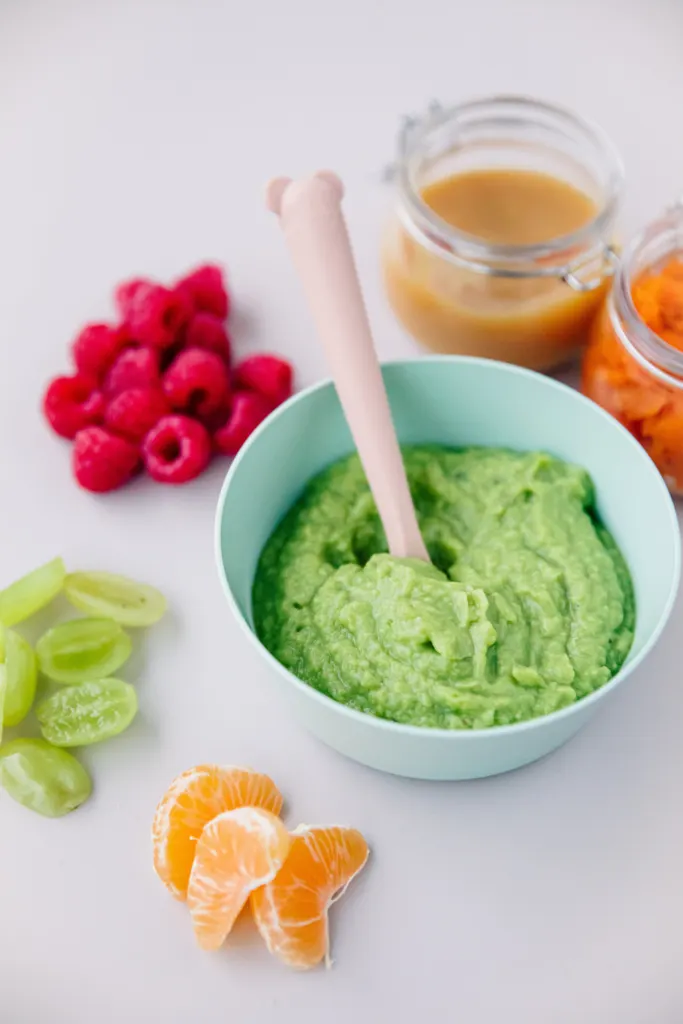
Is it almost time for your child to begin eating solid foods?
Have you given any thought to the possibility of making your own baby food?
You can save money and cut down on waste if you prepare your baby’s first foods at home.
You also have the option of selecting options that are higher in nutrition.
Fresh foods have been shown to contain more nutrients than canned foods, and you have the option of purchasing organic food to cook homemade baby food if you so desire.
You can also steer clear of less-than-healthy components that are commonly found in commercial baby food.
Disclosure: Bear in mind that some of the links in this post are affiliate links and if you click on them to make a purchase I will earn a commission. Keep in mind that I link these companies and their products because of their quality and not because of the commission I receive from your purchases. The decision is yours, and whether or not you decide to buy something is completely up to you.
Making your own baby food doesn’t have to be a time-consuming or financially burdensome endeavor.
In point of fact, the approach that presents the least amount of difficulty and expense is the one that should be chosen.
Easy Tips For Making Homemade Baby Food:
Tip 1
You are wasting your time and money if you purchase a baby food grinder. They are difficult to clean and cause unnecessary hassle. A quality basic kitchen blender will work just fine! Or simply a fork!
Tip 2
If you wait until your baby is six months old to start giving them solid foods, you can almost always get the desired consistency by mashing the food with a fork.
If you are breastfeeding your baby, you can even wait until his “pincer grasp” has developed before giving him small finger foods like cooked peas, bits of grated apple, and other foods of a similar nature to eat.
The pincer grasp is developed when a baby is able to pinch small objects (like those bits of carpet fluff or food that has fallen onto the kitchen floor!) in between his thumb and his first finger.
If there is a history of food allergies in your family, it is recommended that you delay the introduction of solid foods for a longer period of time.
Always give your baby one new food at a time, regardless of how old they are, and wait several days afterward to check for signs of an allergic reaction before giving them another. Take it easy for now.

Related Articles: How To Create A Valentine’s Day Photo Shoot For Your Baby
6 Month Milestones And Baby Development Activities
The 20 Best Genius Baby Items To Make Parenting Easier!
Tip 3
Start with stage one or one ingredient foods. Don’t combine and make concoctions. Save that for a later date.
Simply try each of the ingredients below and mash with a fork or a blender.
Be aware though that some items do require some prep work with cooking like potatoes or yams that need to be baked or steamed.
Foods only containing one ingredient (stage 1), such as:
-Banana
-Carrot (Steamed)
-Potato (steamed or cooked)
-Yam (steamed)
-Avocado
-Pear
-Peach
-Melon
-Plum
-Cooked squash
-Apple ( pureed)
-Peas (mashed or pureed)
-Beans
-Hard cooked egg yolks (avoid the whites until 1 year old)
Some of these foods could be consumed in their uncooked form.
Some ingredients you can find in can form if you choose to skip the cooking step for homemade baby food. Others are given a quick steaming (steaming preserves more nutrients than canning does) to make them more suitable for infant consumption.

Tip 4
There is no need to make a big deal out of make homemade baby food!
It is not impossible to freeze food in ice cube trays after blending it in a blender, but doing so would require a significant amount of time and effort.
But I’m all for taking the straightforward route!
Even though you should steer clear of giving your baby salt and sugar (as well as spices that have the potential to cause stomach distress), it is typically possible to “make” baby’s dinner by simply taking an ingredient from your own dish.
For example, if you are steaming vegetables to serve with dinner, remove one tablespoon of the vegetables from the pan before you add the butter and salt.
This will ensure that the vegetables don’t become soggy. Place this in the baby’s dish, and proceed to mash it.
Voila! Instant baby food that requires no additional preparation.
Alternately, you could take a small portion of the beef roast that you have and mash, mash, mash it until it is very smooth.
Even if you are dining in a restaurant, you have the option of bringing along a banana or another portable food item, or you can bring an apple with you and use a spoon to “grate” it into a finer consistency right at your table.
Cooked beans and avocado would be available at any restaurant that offers a salad bar.
You could also offer the infant a bite of your baked potato (before you add the goodies on top).
Related Articles: The Best Touch And Feel Baby Books
Cloth Diaper Benefits For Baby And You
The Benefits Of Baby Sign Language: Tips For Success!
Final Thoughts
The adjustment to life with a new child is difficult enough. Keep starting solids simple!
Many new parents get overwhelmed about starting solids. It’s a big transition from the bottle.
Factor in things like allergies and chocking hazards with foods and it can be a scary endeavor.
In the long run making your own homemade baby food will not only save you money, but make things simpler for you. Don’t overthink things!
Simply buy fresh or canned ingredients to start solids for stage one. Then, as your baby progresses they can move into having combined foods.
Works Cited
How to Make Baby Food (eatright.org)
Ultimate Guide on Baby Food Purees (4-6+ months) | Baby Foode

